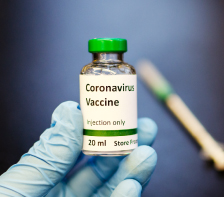is 2019 Novel Coronavirus?
The 2019 Novel Coronavirus, or 2019-nCoV, is a new respiratory virus first identified in Wuhan, Hubei Province of China. It wasn’t a strain that was identified before.
What is the source of 2019-nCoV?
Public health officials and partners are working hard to identify the source of the 2019-nCoV. Corona viruses are a large family of viruses, some causing illness in people while others circulate among animals, including camels, cats and bats. Analysis of the genetic tree of this virus is still underway to know the exact source of this virus. SARS, another coronavirus that did infect people in past, came from civet cats, while MERS, another coronavirus that infected people in past, came from camels.
How does the virus spread?
This virus probably originally emerged from an animal source but now seems to be spreading from person-to-person. It’s important to note that person-to-person spread can happen on a continuum. Some viruses are highly contagious (like measles), while other viruses are less so. At this time, it’s unclear how easily or sustainably this virus is spreading between people.
How can I help protect myself?
There is currently no vaccine to prevent 2019-nCoV infection. The best way to prevent infection is to avoid being exposed to this virus. However, as a reminder, it is recommended by the World Health Organization to take preventive actions. You can prevent the spread of respiratory viruses by:
- Washing your hands often with soap and water for at least 20 seconds. If soap and water are not available, use an alcohol-based hand sanitizer.
- Avoid touching your eyes, nose, and mouth with unwashed hands.
- Avoiding close contact with people who are sick.
- Staying home when you are sick.
- Covering your cough or sneeze with a tissue, then throwing away the tissue in the trash.
- Cleaning and disinfecting frequently touched objects and surfaces.
These are everyday habits that can help prevent the spread of several viruses
What should I do if I had close contact with someone who has 2019-nCoV?
If you have had close contact with someone who is confirmed to have, or being evaluated for, 2019-nCoV infection, you should:
- Monitor your health starting from the day you first had close contact with the person and continue for 14 days after you last had close contact with the person.
- Watch for these signs and symptoms:
- Fever. Take your temperature twice a day.
- Coughing.
- Shortness of breath or difficulty breathing.
- Other early symptoms to watch for are chills, body aches, sore throat, headache, diarrhoea, nausea/vomiting, and runny nose.
- If you develop fever or any of these symptoms, visit your healthcare provider right away.
- Before going to your medical appointment, be sure to tell your doctor about your close contact with someone who is confirmed to have, or being evaluated for, 2019-nCoV infection. This will help the doctor’s office take steps to keep other people from getting infected. Ask your healthcare provider to call the local or state health department.
- If you do not have any symptoms, you can continue with your daily activities, such as going to work, school, or other public areas.
Should I avoid contact with pets or other animals if I am sick?
Do not handle pets or other animals while sick. Although there have not been reports of pets or other animals becoming sick with 2019-nCoV, several types of coronaviruses can cause illness in animals and spread between animals and people. Until we know more, avoid contact with animals and wear a facemask if you must be around animals or care for a pet.
Current statistics of the spread of the virus?
As of the 25th of January 2020, a total of 1287 cases and 41 deaths were reported in 29 provinces (districts and cities) of China. In addition, 28 cases have been confirmed outside Chinese mainland: 5 cases in Hong Kong, 2 cases in Macao, 3 cases in Taiwan, 4 cases in Thailand (2 cases cured), 2 cases in Japan (1 case cured), 2 cases in South Korea, 2 cases in the United States, 2 cases in Vietnam, 3 cases in Singapore, 1 case in Nepal and 2 cases in France.

